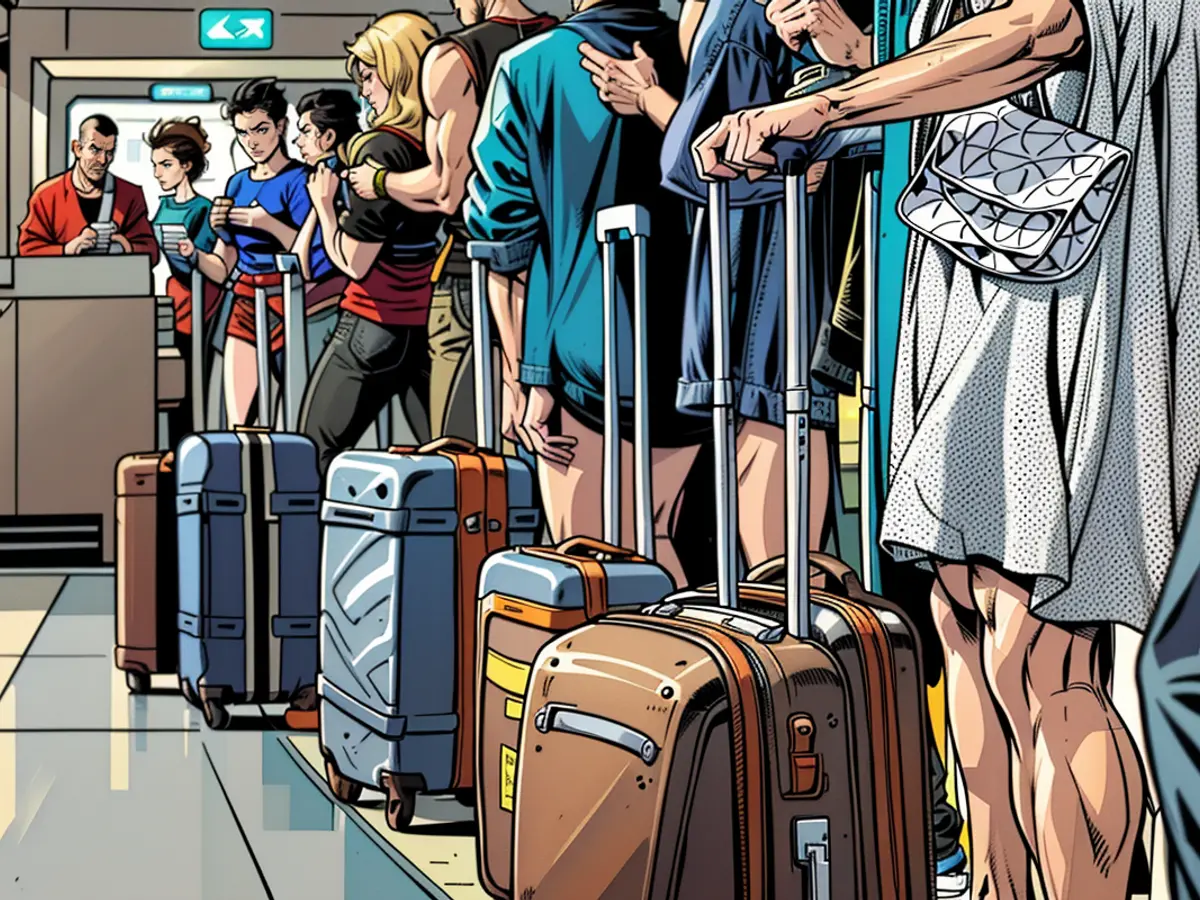On the road with a handicap - Accessibility on vacation: The most important tips - and best travel destinations
A beach vacation in Spain, a road trip through Scandinavia or would you prefer to go mountain hiking in the Swiss Alps? When we feel a longing for faraway places, numerous possibilities pop into our heads as to where our next trip could take us. Sometimes, however, there is a barrier between us and our dream destination - in the literal sense.
Accessibility is still far from being a standard in Germany, especially when it comes to mobility, vacations and leisure activities. Yet there are around 7.8 million people in this country alone with a severely disabled person's pass and a further three million people with a slight disability. Not to mention the many older people who are increasingly dependent on help.
It is obvious that the target group for accessible travel is large. Nevertheless, those affected still have to contend with restrictions. This often leads to great uncertainty when it comes to travel.
How do I get to my destination? What options do I have locally? And which destinations are actually suitable for people in wheelchairs or with visual impairments? We answer the most important questions about accessibility when traveling.
Accessible vacations: tips and tricks for booking your trip
If you are affected by barriers in everyday life and want to relax on vacation, you should find out as much as possible about your destination in advance. Even if the hotel description says "barrier-free" or "wheelchair accessible", there is no guarantee that the entire building is really accessible for people with disabilities. It is worth calling the potential host and asking.
Nowadays, you can find basic information about the conditions on site in all brochures and online advertisements from travel agents. Since 2018, the following applies: It must be stated whether the location is suitable for people in wheelchairs or with sensory impairments. However, if you want to be sure, you should also ask the tour operator about package tours.
If something does go wrong or there are more barriers than announced by the tour operator, it is always worth putting accessibility in writing in the travel contract. In principle, it is possible to travel to any country in the world.
However, if you want to make things a little easier for yourself, you can also use the online portal "Travel for All". The German government launched the project a few years ago together with the initiative of the German Seminar for Tourism Berlin e.V. to give people with disabilities better access to leisure activities, culture and travel.
Today, the website offers numerous tips, tricks and more than 2,500 ideas for barrier-free travel planning in Germany. To this end, tourist attractions such as hotels, cultural institutions, sights, stores and restaurants are recorded and certified nationwide according to standardized criteria. This allows people with disabilities to see immediately whether the destination is suitable for them or what barriers they may encounter.
Incidentally, neither tour operators nor transport companies are allowed to refuse a booking on the grounds of disability or age. The only exception is if the acceptance is associated with a safety risk for the customer.
Accessibility meets mobility: what to consider when traveling
Speaking of transport companies: Once the destination has been determined and the booking confirmed, it's time to get down to business. One question plays a central role in travel planning: how do I actually get to my destination?
Particularly in view of the climate crisis, more and more people are choosing to travel by land these days. In other words, they are traveling by train or car instead of taking a plane. This is also a good alternative for people with disabilities - at least for short trips and by direct train.
After all, changing trains quickly at a busy station or making a short stop at a service station are things that are not so easy to do in a wheelchair or with a visual impairment. In Germany, we do have disabled toilets at many (not all) service stations - but in other countries this is still far from standard. If you still want to travel by car, it is best to find out in advance at which stops there is accessibility.
Traveling by train to your vacation destination can be difficult, especially for wheelchair users. At the very least, however, this form of travel also requires planning. With Deutsche Bahn, passengers with disabilities must book an appointment with the Mobility Service Center well in advance so that they can be assisted with boarding and alighting. The rule here is: first come, first served. This is because there are only a limited number of places for wheelchair users on the train - and these cannot be reserved.
A similar procedure awaits travelers at the airport. The same applies here: if you want to travel with a wheelchair, you should call the airport at least 48 hours before departure and make an appointment. Only then can it be guaranteed that assistance will be available on site. To ensure that ground staff are aware of the passenger's individual situation, there are internationally valid classifications that you should be aware of:
WCHR (Wheelchair Ramp): A passenger with a walking disability who needs help boarding and disembarking at the airport but can walk a few steps.
WCHS (Wheelchair Steps): A severely disabled person who is barely able to walk and requires assistance to the aircraft door.
WCHC (Wheelchair Carry): Passenger who is unable to walk and also needs assistance inside the aircraft, for example to get to the toilet.
In principle, people with disabilities or reduced mobility have special rights when traveling by air, local transport or ship throughout the European Union. This applies, on the one hand, to assistance with boarding and disembarking and, on the other, to the free transportation of an accompanying person. In both cases, however, prior notification is required.
Traveling with a disability: accessibility at the vacation destination
What many people don't know: There are more than one billion people with disabilities worldwide. That is around 15 percent of the entire world population. This figure also means that it is theoretically possible to travel with a wheelchair or a visual impairment in every country. In practice, of course, this requires more detailed planning and preparation, depending on the destination.
It is therefore particularly important for people with a chronic illness or an unstable health situation to find out about the local infrastructure in advance. It can be reassuring to always have a list of all doctors and contact persons with you in case of an emergency. In this context, it always makes sense to take out international health insurance.
It is important not to take on too much when you are there. Just because you're on vacation and want to make the most of your time, you shouldn't overexert yourself. Therefore, assess your body realistically and plan activities that suit you. A trip up a steep mountain may not be the best idea for a trip with a wheelchair, despite the breathtaking views.
In general, the following applies to leisure activities on vacation: preparation is essential. Look out for restaurants, sights and events in advance and find out about the options and barriers on site to avoid any nasty surprises.
Food for the bucket list: accessible travel destinations
Where to go on your next trip? You can find inspiration for accessible vacation destinations on the online portal "Travel for all". For example, there are entire travel programs including on-site activities for a number of destinations in Germany, such as Bremerhaven, Dortmund, Bad Bevensen or the Teutoburg Forest. But our neighbors to the south can also offer accessibility. Many vacation destinations in Austria are now geared towards travelers with disabilities, for example with extra ski areas or a transparent description of the accommodation.
Every year, the "Access City Award" recognizes the European cities that are the most attractive for people with disabilities. This year's winner is the city of Luxembourg, capital of the country of the same name. The Finnish city of Helsinki and the Spanish metropolis of Barcelona take second and third place in the ranking.
Helsinki's high ranking is hardly surprising. Scandinavia is generally regarded throughout Europe as a role model when it comes to accessibility. In Sweden, Nordwegen and Finland, it is now even enshrined in law that as many areas of public life as possible should be accessible to everyone. Although there are certainly still exceptions, the north of Europe is a good place to start when it comes to accessible travel.
Incidentally, the United States has had a corresponding regulation in place for many years. The so-called "Americas with Disabilities Act" from 1990 states that all new buildings must be generally accessible. Existing facilities should also be made more accessible.
The reason: due to the many wars in which America has been involved, there are many veterans with disabilities in the country. As a result, people with disabilities in the USA enjoy a distinctly welcoming culture and many opportunities that do not yet exist in other countries. With this in mind, have a good trip across the pond.
Source: "Travel for All" online portal, "Germany-Travel" tourism portal, Deutsche Bahn information portal, "Access City Award 2022" city ranking
Read also:
- The lame duck: Who is GDL boss Claus Weselsky?
- Delays and train cancellations: what rights passengers have in the event of a rail strike
- EU Commission wants to strengthen travel rights
- Only two out of 180 BILD readers satisfied with the traffic lights
- For wheelchair users, mountain hiking in the Swiss Alps might seem like an impossible dream, but with proper planning and the right accommodations, it can be an accessible vacation destination.
- If you're a wheelchair user planning a trip to Spain, it's essential to research the destination in advance to ensure that it's truly barrier-free.
- In Germany, the Federal Government has taken steps to improve accessibility in tourism, launching the "Travel for All" project to provide better access to leisure activities, culture, and travel.
- For travelers with disabilities, it's important to know that tour operators and transport companies are not allowed to refuse a booking based on disability or age, except in cases associated with a safety risk for the customer.
- When traveling by train in Germany, especially for wheelchair users, advance planning is necessary to ensure that special assistance is available for boarding and alighting.
- In Scandinavia, countries like Sweden, Norway, and Finland have enshrined legislation that requires many areas of public life to be accessible to everyone, making it a role model for accessible travel.
- The United States has had laws in place for decades, such as the Americans with Disabilities Act of 1990, which requires new buildings to be accessible and encourages the improvement of existing facilities for people with disabilities.
Source: www.stern.de








